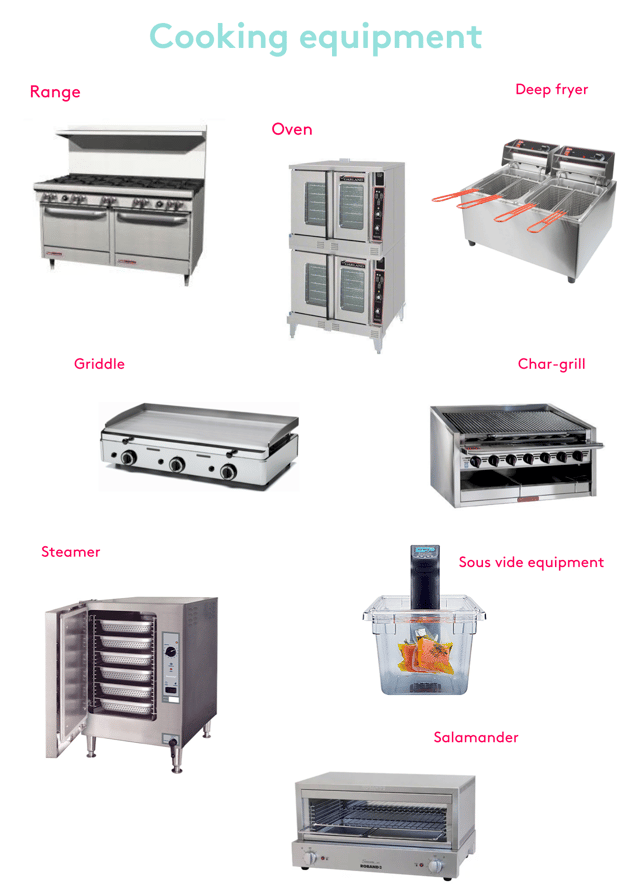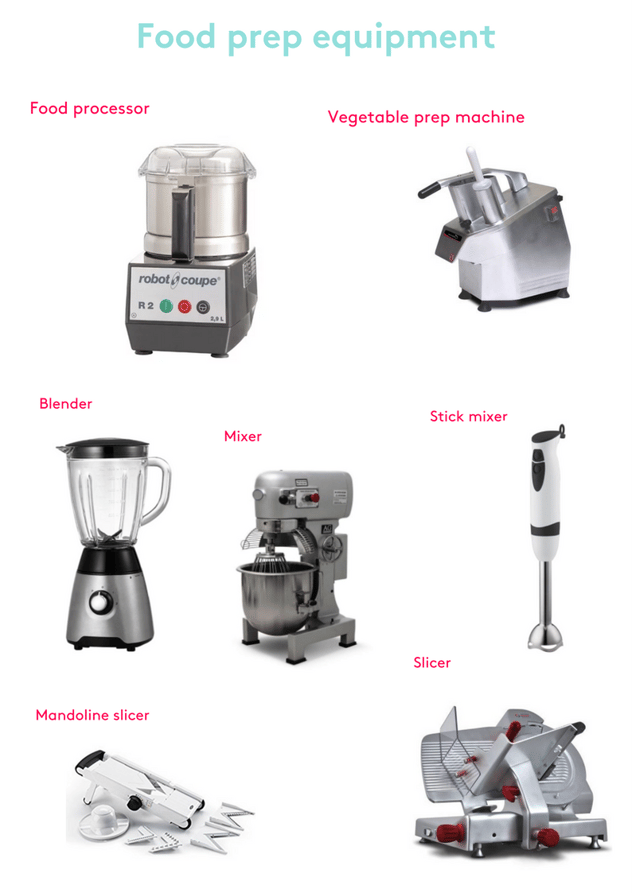The equipment housed in commercial kitchens is an indispensable (and very expensive) element of a successful restaurant.
Every commercial kitchen with its unique menu will pick the equipment that will help it meet its food preparation and cooking needs. The equipment used to cook food off a simple brunch menu will look very different to the complicated gadgets used in restaurants that specialize in molecular gastronomy.
With so much different equipment out there, commercial kitchens can be daunting places for back of house newbies – especially those who are working their way up the kitchen hierarchy without a commercial cookery education. That’s why we’ve put together this guide to help you familiarize yourself with some of the equipment you’re likely to come across when you land that back of house job.
Cooking equipment
A range is arguably the most essential piece of equipment in a commercial kitchen. You’d be hard pressed to find a kitchen without one! A range combines a stove with an oven, making it possible to cook food simultaneously in a variety of ways. This includes boiling, frying, pan-searing, baking, broiling and roasting. A small venue may only need a range with two burners while a high-volume venue may use a range with up to 12 burners, preparing a variety of dishes at once.
Commercial ovens come in all shapes and sizes for heating, baking and roasting, ranging from the humble and indispensable microwave to specialized pizza and rotisserie ovens.
Griddles and flat-top grills use a heat source beneath a flat plate which allows food to cook quickly and evenly. They are used to cook a variety of foods, from steaks to pancakes, and are perfect for cooking large quantities of foods at once – which is why you’ll almost always find them in high-volume venues such as diners.
Char-grills (or char-broilers) create the appearance and taste of barbequed foods, making them ideal for cooking meats, especially burgers!

Salamanders (or overhead broilers) are small, self-contained broiler units that can be used for a number of cooking needs, from crisping up the top of a dish to melting cheese and toasting sandwiches.
Deep fryers are another important piece of cooking equipment that you’re likely to come across in many venues. Deep fryers can be used to prepare a variety of foods, from fish and hot chips to donuts. They come in stand-alone or counter-top varieties, with other variations depending on the food preparation needs.
Steamers are used to quickly steam, poach, stew, thaw out or reheat food in what is generally considered a healthier preparation method. Rice cookers and the Bain Marie (used to heat ingredients gently and gradually, or to keep food warm over a period of time) fall into this category.
Sous vide refers to a method of cooking in which food is vacuum-sealed in a plastic pouch and steamed for long periods at low temperatures. You’re likely to come across sous vide cooking if you work in a gourmet restaurant, in which case you’ll become familiar with vacuum packaging machines and vacuum bags.
Food preparation equipment
Food processors have interchangeable blades that speed up the process of repetitive food preparation tasks, especially chopping and grinding. Special vegetable prep models feature a chute through which vegetables are fed for chopping, shredding, grating or julienning.
Blenders are used for emulsifying and liquefying, making them ideal for making sauces, soups and smoothies.
Kneading dough, making cake batter, whipping eggs or preparing cake icing...? A mixer will be your best friend, saving time and potential RSI injuries. Additionally, stick mixers (or immersion blenders) are smaller, hand-held mixers that allow for mixing sauces, soups and stews in the containers in which the food is being prepared. Some models feature a whisk attachment as well.
Slicers are primarily used to cut meats and cheeses (but also many other foods) into thin, uniform slices for perfecting presentation. They can be manually or automatically operated and can even cut frozen foods. Its relative, the mandoline slicer, is used for cutting fruits and vegetables.

Dishwashing equipment
Cleaning and sanitizing dishes in a commercial kitchen is not quite as simple as at home. Every restaurant will feature a deep sink with a hose for rinsing, alongside a commercial-grade dishwashing machine – under-counter or the larger ‘door-type’ (which can feature a conveyor belt), both designed to clean large quantities of dishes at once.
Often you will find separate glass and pot washing machines in a restaurant to accommodate these different needs.
Want more tips on back-of-house? Start our lesson now on the role of the Executive Chef with Glenn Flood.

You might also like